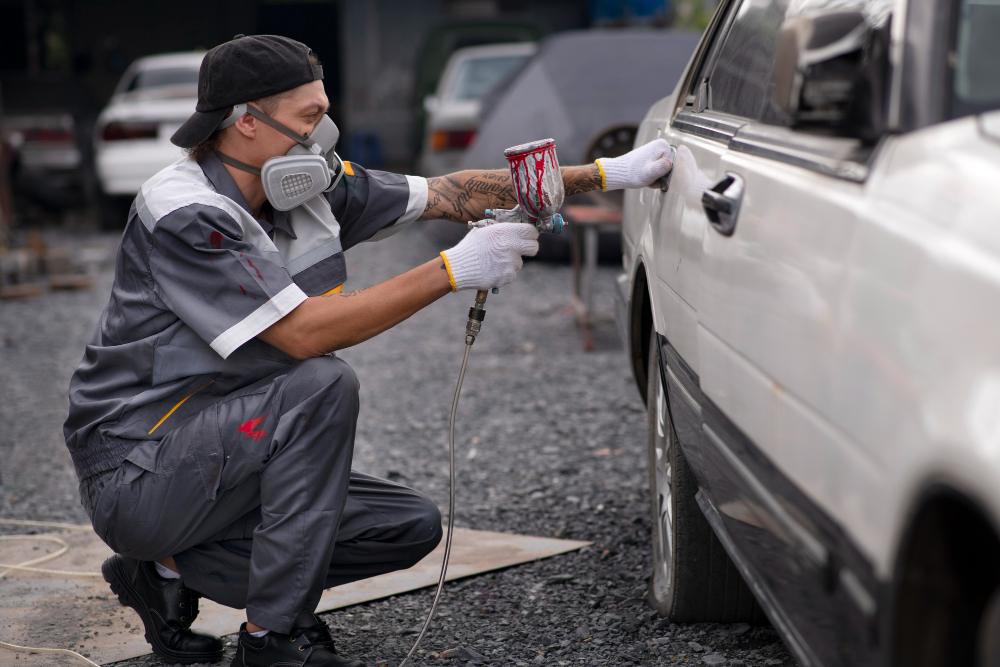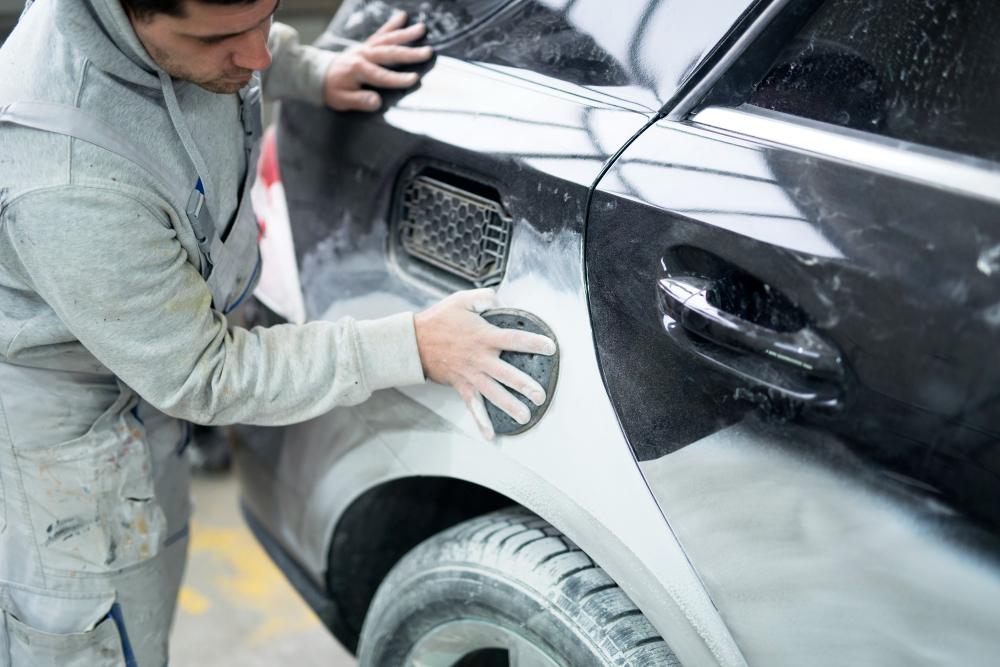Fixing Scratches and Scuffs on Your Cars’ Paintwork
- November 17, 2023
- Blog

Scrapes and scratches on a car’s paintwork is a common issue that many people face, which can be caused accidentally or purposely by someone. If you are facing the same issue, don’t worry; we are here to familiarise you with various ways to deal with these scratches.
Common Causes of Car Scratches
There could be multiple reasons for a car scratching; some common ones are:
Improper Car Washing
When you clean your car, it’s essential to do it right. Commonly, automatic car washes may use rough brushes that can scratch your car’s paint.
Road Debris
While driving, small stones kicked up by other vehicles can chip your car’s paint. To avoid this, keep a safe distance and don’t follow large trucks closely.
Accidental Contact
Accidents happen, like missing the keyhole when unlocking the car’s door or rubbing the car with a coat zipper. These accidents are common to happen, but keep your worries at bay since these minor mishaps are usually simple to fix.
Vandalism
Sometimes, people intentionally scratch a car using sharp objects like keys. This results in serious damage and is costly to repair.
Collisions
Involving in a collision with another vehicle or an object will likely result in a scratch, requiring professional help unless the damage is minor.
Equipment Needed for Car Scratch Repairs
Light Scrapes
Autoglym or T-Cut Paint Renovator: These products are slightly abrasive and can help fix minor scratches by removing the top layer of paint.
Lint-Free, Clean Cloth: You’ll need this cloth to clean the cutting compound.
Wax: After using the cutting compound, wax is needed to protect the exposed paint.
Serious Scuffs
Rust Preventer: In the case of more significant damage, you may need a rust preventer.
Touch-Up Pen: You may need a touch-up pen that matches your car’s paint code.
Wax: Wax application is required for added protection after repairing the damage.
Repair Kits: For DIY repairs, kits containing all the repair tools are needed.
Extensive Damage
Different Grades of Sandpaper: Extremely fine sandpaper is needed to scrape the damage.
Primer: Used to prepare the surface for paint.
Spray Can of Paint: Spray paint matching your car’s colour is required.
Electric Sander: Used to remove scratches in less time than manual sanding.
Electric Heater: Used to improve the finishing of the paint.

Fixing the Scratches on the Car’s Paintwork
A common concern of many people is, “Can I fix a car’s paint scratches myself?”
It depends on the scratch’s depth. Minor scratches can be fixed at home without any hassle, while deeper ones require an expert’s assistance.
Here are the two main types of scratches and how you can fix at home:
Light Scratches on the Surface
- Wash your car to ensure the area is clean and free of grease.
- Put a small amount of cutting compound on a clean cloth and rub it on the scratch.
- Rub the cloth in a circular motion and wipe the excessive compound.
- If the scratch remains, you can repeat the process a few times, but don’t overdo it.
- If it’s still there, it might be deeper than just the topcoat.
Deeper Scratches
- First, clean the damaged area thoroughly.
- Put the cutting compound on the affected place and start scrubbing with the help of cloth in circular motions.
- Keep cleaning the area and remove the excessive compound frequently.
- Use touch-up paint with a spray can, touch-up pen, or a paintbrush. If using a spray can, cover the surrounding area with tape or a cloth to keep it safe from paint.
- Give the appropriate drying time for the paint to dry; when it is dried, apply thin layers of clear coat to lock the paint.
- To make the repair blend in, use fine grit sandpaper sandpaper, an appropriate cutting compound and rub it lightly in circular motions.
- After the area is dry and clean, coat a layer of wax on the freshly painted area.
Table of Contents
FAQs
Toothpaste can work for very light surface scratches because it contains mildly abrasive particles similar to some cutting compounds. However, it is not effective for deeper or more significant scratches. For better results, it’s recommended to use a cutting compound designed for car paintwork.
Yes, you can use WD-40 to remove scuffs on your but, but it is advised not to use it on deeper scratches, as it dissolves a car’s paint. For lighter scratches, spray WD-40 on the affected area and buff it gently with a clean cloth until it removes the scratches or makes them less visible.

